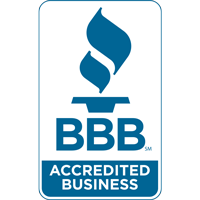
You might not think much about how your air conditioner works, but it needs refrigerant to keep your residence cool. This refrigerant is subject to environmental laws, as it contains chemicals.
Based on when your air conditioner was put in, it may need R-22, R-410A or R-32 refrigerant. We’ll discuss the differences and which air conditioner refrigerants are being phased out in Manassas, in addition to how these phaseouts affect you.
What’s R-22 and Why Is It Phased Out?
If your air conditioner was installed before 2010, it likely contains Freon®. You can learn if your air conditioner contains it by contacting us at 703-260-1148. You can also look at the name plate on your air conditioner condenser, which is found outside your residence. This sticker will include information on what model of refrigerant your AC has.
Freon, which is also known as R-22, has chlorine. Scientists consider R-22 to be harmful to the earth’s ozone layer and one that prompts global warming. The Environmental Protection Agency, which manages refrigerants in the United States, barred its creation and import in January 2020.
I Use an Air Conditioner with R-22. Do I Need to Get a New One?
It varies. If your air conditioning is cooling correctly, you can continue to keep it. With routine air conditioner maintenance, you can expect your AC to last around 15–20 years. However, the Department of Energy notes that replacing a 10-year-old air conditioner could save you 20–40% on annual cooling bills!
If you don’t install a new air conditioner, it might create difficulties if you need air conditioning repair down the road, specifically for refrigerant. Repairs can be more expensive, because only limited quantities of recycled and reclaimed R-22 is on hand.
With the end of R-22, a lot of new air conditioners now have Puron®. Also known as R-410A, this refrigerant was developed to keep the ozone layer healthy. Since it needs an incompatible pressure level, it doesn’t work with air conditioners that rely on R-22 for cooling.
However, Puron still has the likelihood to contribute to global warming. As a consequence, it could also sometime be phased out. Although it hasn’t been mandated yet for residential air conditioners, it’s likely sometime this decade.
What Refrigerant Will Take the Place of R-410A?
In preparation of the end, some manufacturers have initiated using R-32 in new air conditioners. This refrigerant rates low for global warming likelihood—around one-third less than R-410A. And it also decreases energy use by about 10%, according to the Intergovernmental Panel on Climate Change’s Fourth Assessment Report. That’s savings that could be forwarded on to you through your energy bills.
Air-Right Energy Design Can Help with All Your Air Conditioning Needs
In short, the modifications to air conditioner refrigerant probably won’t affect you greatly until you have to have repairs. But as we discussed earlier, refrigerant-related repairs can be pricier because of the low amounts on hand.
Not to mention, your air conditioner often malfunctions at the worst time, often on the muggiest day when we’re experiencing many other calls for AC repair.
If your air conditioner requires a discontinued refrigerant or is aging, we recommend upgrading to a new, energy-efficient air conditioner. This ensures a trouble-free summer and could even reduce your electrical costs, especially if you select an ENERGY STAR®-rated system. Plus, Air-Right Energy Design has many financing programs to make your new air conditioner work with your budget. Contact us at 703-260-1148 to start now with a free estimate.






